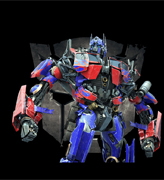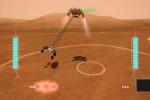 NASA has opened registration for the 2012 OPTIMUS PRIME Spinoff Video Contest. Featuring OPTIMUS PRIME, the leader from the popular TRANSFORMERS brand, the contest highlights spinoffs from NASA technologies that are used on Earth. The goal is to help students understand the benefits of NASA technology to their daily lives.
NASA has opened registration for the 2012 OPTIMUS PRIME Spinoff Video Contest. Featuring OPTIMUS PRIME, the leader from the popular TRANSFORMERS brand, the contest highlights spinoffs from NASA technologies that are used on Earth. The goal is to help students understand the benefits of NASA technology to their daily lives.
Each student, or group of students, will submit a three- to five-minute video on a selected NASA spinoff technology listed in NASA’s 2011 “Spinoff” publication. Videos must demonstrate an understanding of the NASA spinoff technology and the associated NASA mission, as well as the commercial application and public benefit associated with the spinoff technology.
Participants must register for the contest by Dec. 15, 2012.
Video entries will be posted on the NASA YouTube channel, and the public will be responsible for the first round of judging. The top five submissions from each of the three grade groups (elementary [3rd-5th], middle [6th-8th] and high school [9th-12th]) will advance for final judging. A NASA panel will select a winning entry from each group. The students submitting the winning entries will be the guests of honor at the OPTIMUS PRIME Spinoff Contest awards ceremony in May 2013. While there, the winners will receive the OPTIMUS PRIME Spinoff Contest trophy and have the opportunity to meet NASA VIPs, astronauts and actor Peter Cullen, who voices the character OPTIMUS PRIME.
TRANSFORMERS and OPTIMUS PRIME are trademarks of Hasbro and are used with permission. © 2012 Hasbro. All Rights Reserved.
For more information, visit https://www.nasa.gov/centers/goddard/news/releases/2012/12-077.html.
Questions about this contest should be directed to Darryl Mitchell at Darryl.R.Mitchell@nasa.gov.
 In this NASA Now classroom video, you’ll hear from three career engineers at NASA Langley Research Center who work in very different fields. They discuss the unique projects they are working on and how science, technology, engineering and mathematics education played a role in their career path to NASA.
In this NASA Now classroom video, you’ll hear from three career engineers at NASA Langley Research Center who work in very different fields. They discuss the unique projects they are working on and how science, technology, engineering and mathematics education played a role in their career path to NASA.

 NASA has opened registration for the 2012 OPTIMUS PRIME Spinoff Video Contest. Featuring OPTIMUS PRIME, the leader from the popular TRANSFORMERS brand, the contest highlights spinoffs from NASA technologies that are used on Earth. The goal is to help students understand the benefits of NASA technology to their daily lives.
NASA has opened registration for the 2012 OPTIMUS PRIME Spinoff Video Contest. Featuring OPTIMUS PRIME, the leader from the popular TRANSFORMERS brand, the contest highlights spinoffs from NASA technologies that are used on Earth. The goal is to help students understand the benefits of NASA technology to their daily lives.  NASA Explorer Schools is offering students in grades 7-12 an opportunity to ask questions of Nicole Smith, an aerospace engineer on the Orion crew and service module project. Join the video chat on Oct. 24, 2012, from 1 – 2 p.m. EDT to ask Smith questions about the Orion Multi-Purpose Crew Vehicle, America’s new spacecraft for human exploration. She also will address the importance of teamwork and her career as an aerospace engineer.
NASA Explorer Schools is offering students in grades 7-12 an opportunity to ask questions of Nicole Smith, an aerospace engineer on the Orion crew and service module project. Join the video chat on Oct. 24, 2012, from 1 – 2 p.m. EDT to ask Smith questions about the Orion Multi-Purpose Crew Vehicle, America’s new spacecraft for human exploration. She also will address the importance of teamwork and her career as an aerospace engineer. Here’s an exciting opportunity to involve your students in the unique RealWorld-InWorld NASA Engineering Design Challenge to solve real NASA-related problems.
Here’s an exciting opportunity to involve your students in the unique RealWorld-InWorld NASA Engineering Design Challenge to solve real NASA-related problems. In collaboration with Microsoft Corp., a new outreach game was unveiled Monday to give the public a sense of the challenge and adventure of landing in a precise location on the surface. Called “Mars Rover Landing,” the game is an immersive experience for the Xbox 360 home entertainment console that allows users to take control of their own spacecraft and face the extreme challenges of landing a rover on Mars.
In collaboration with Microsoft Corp., a new outreach game was unveiled Monday to give the public a sense of the challenge and adventure of landing in a precise location on the surface. Called “Mars Rover Landing,” the game is an immersive experience for the Xbox 360 home entertainment console that allows users to take control of their own spacecraft and face the extreme challenges of landing a rover on Mars.